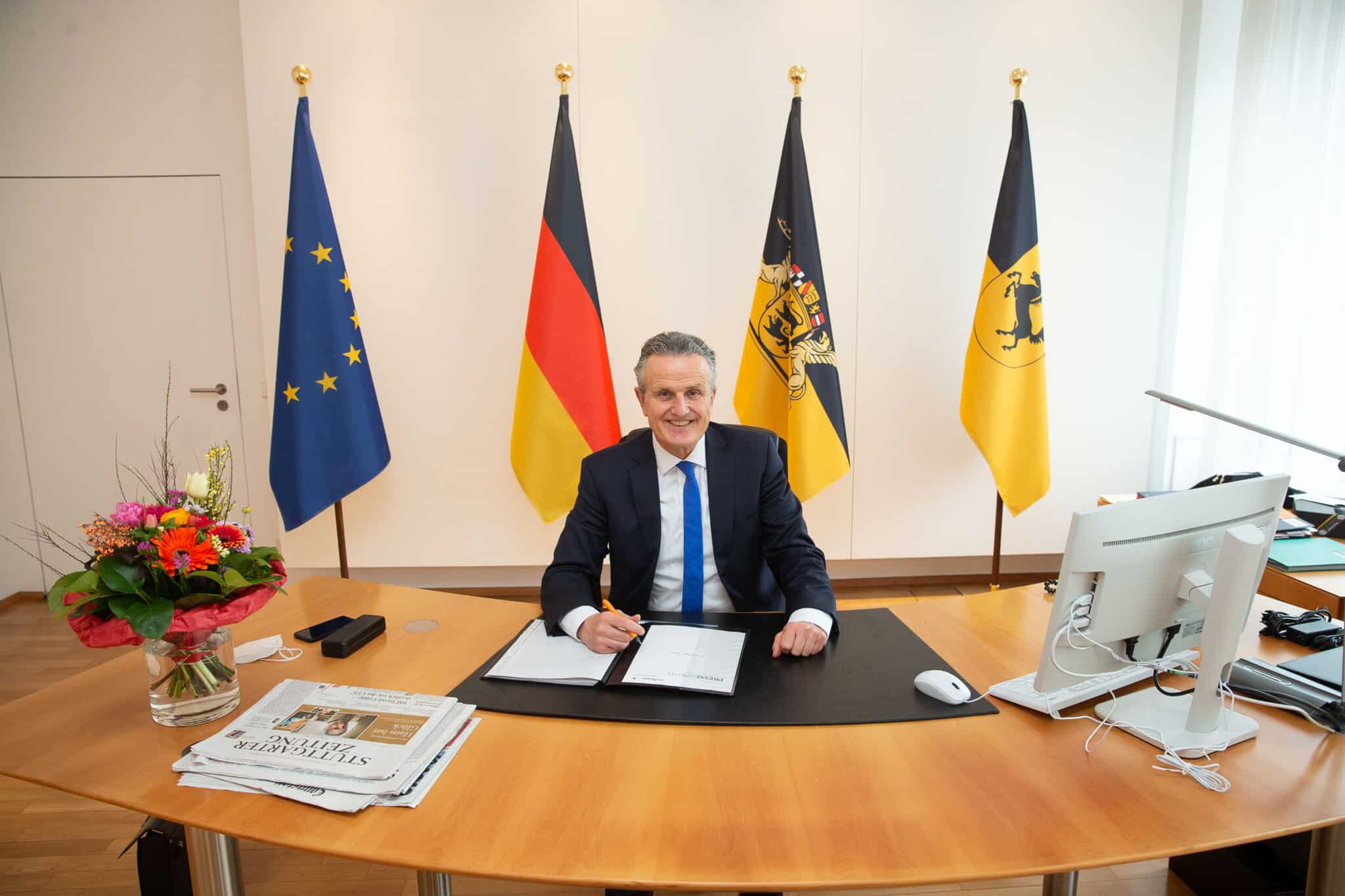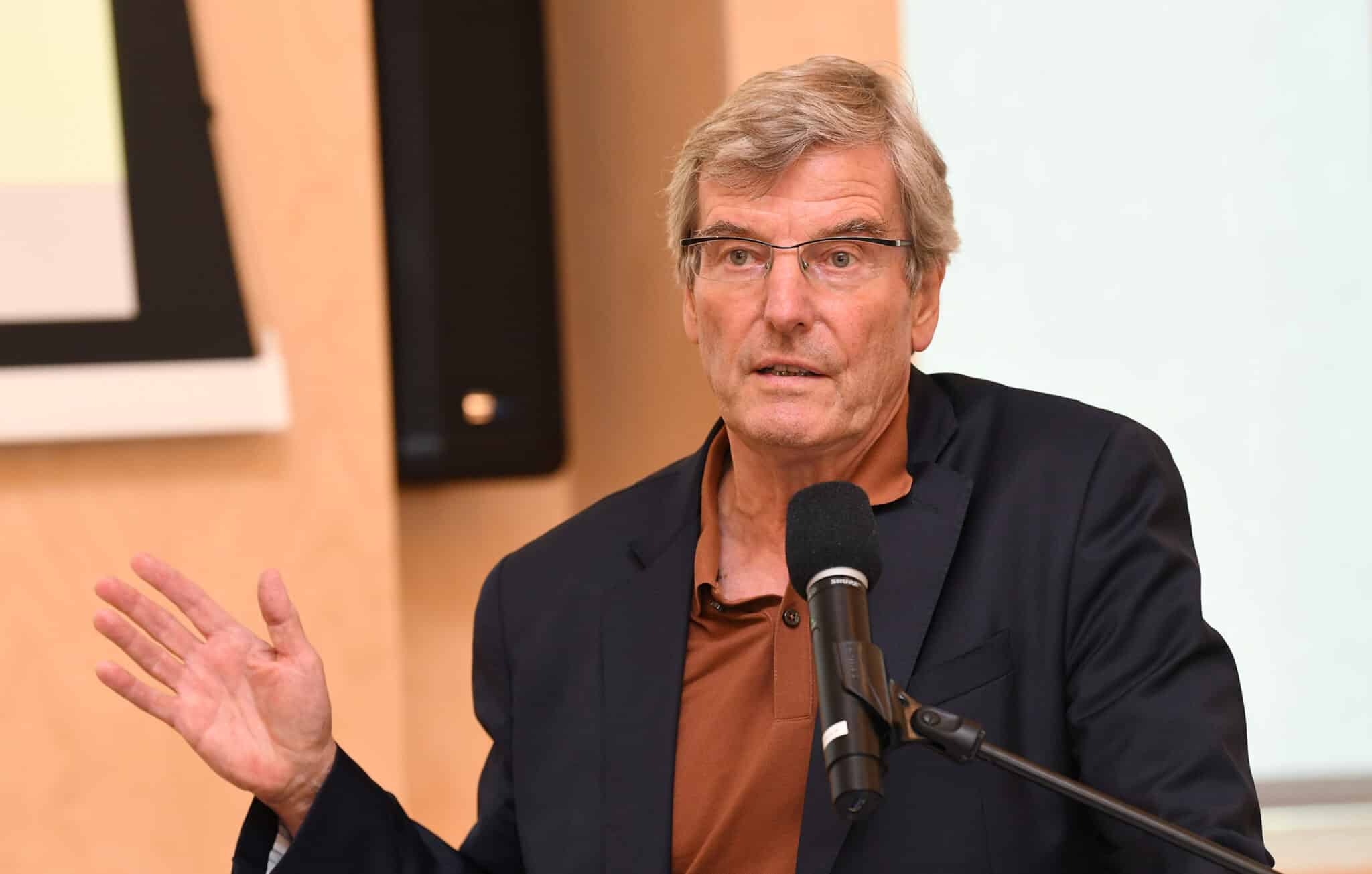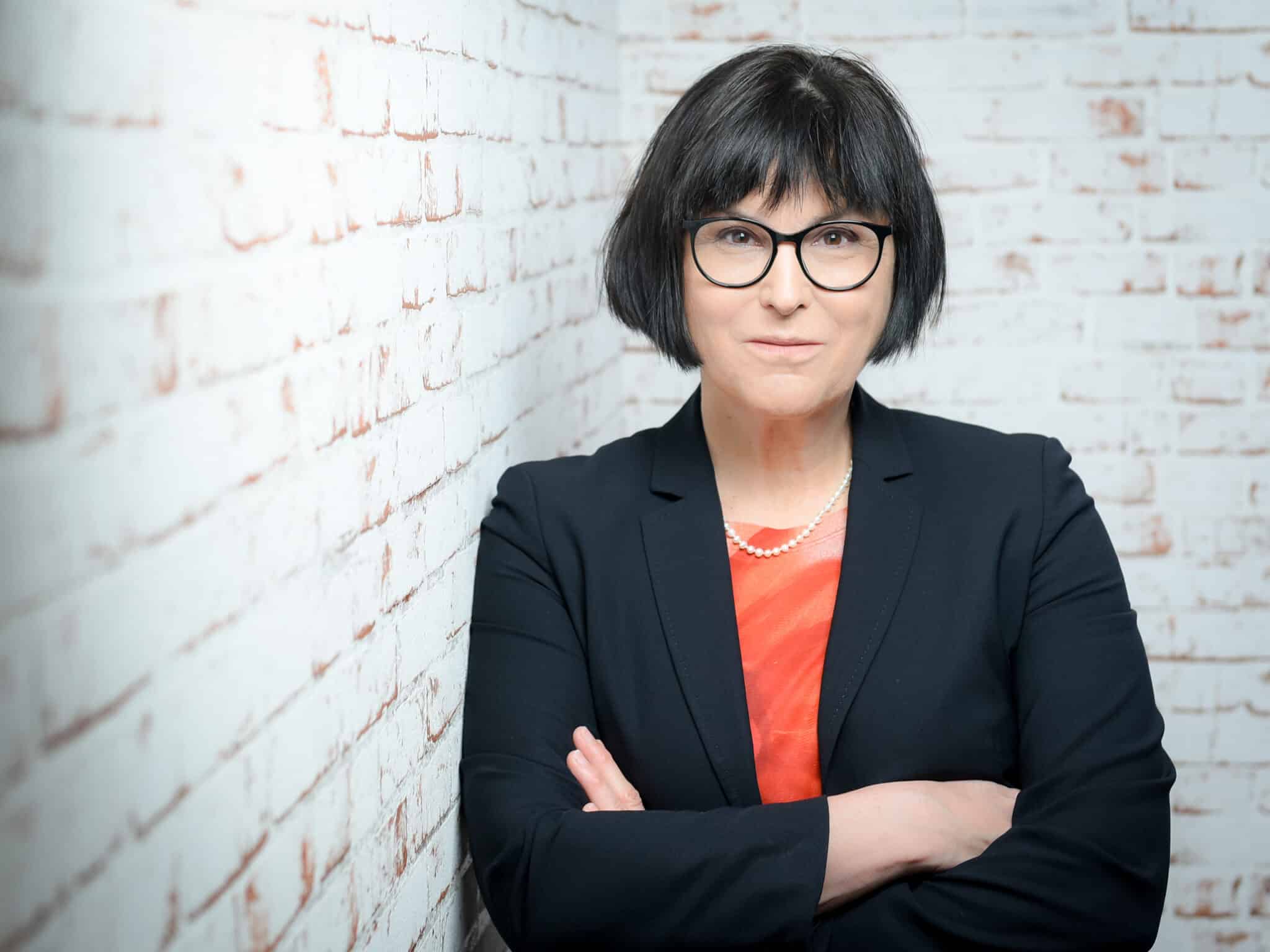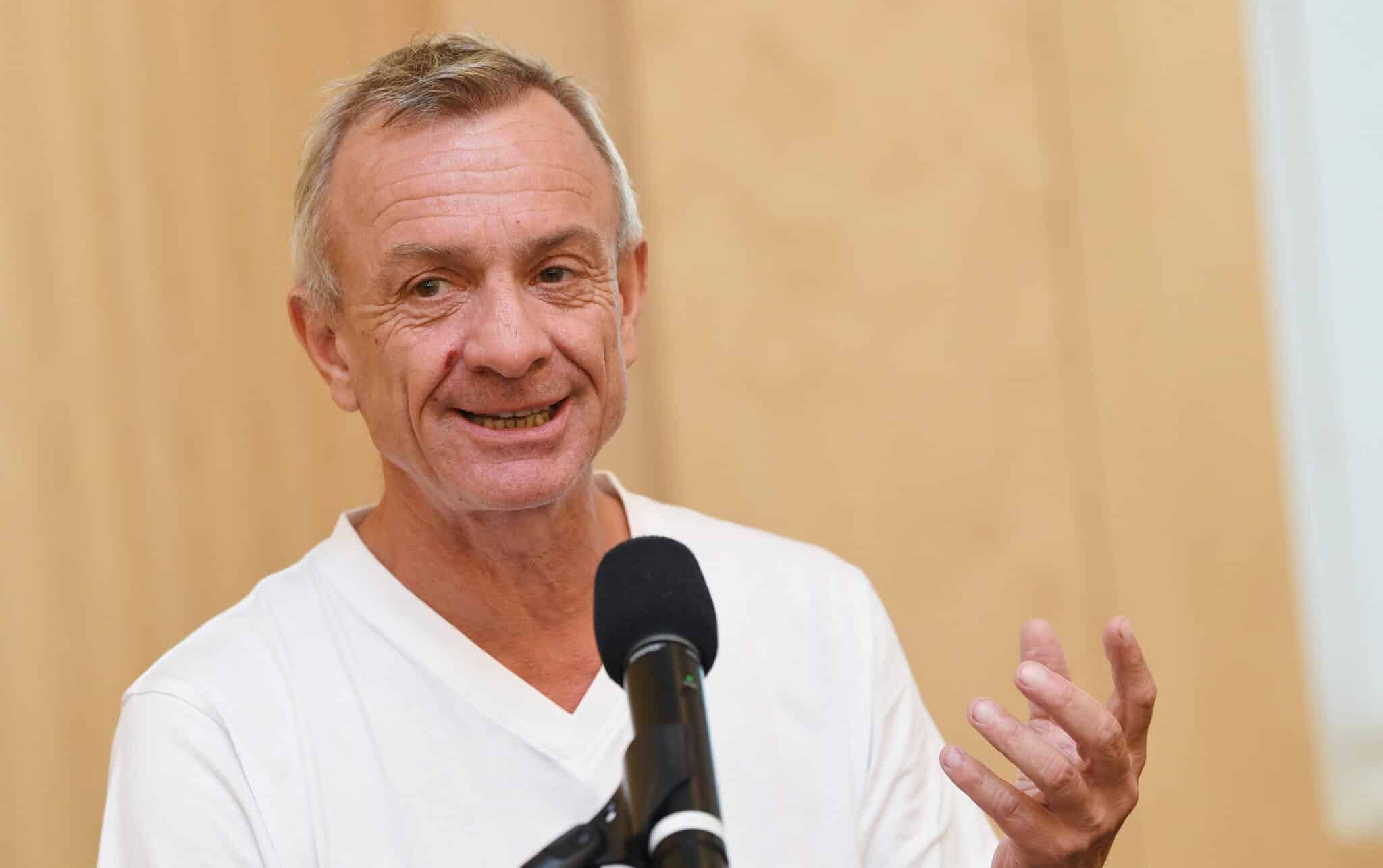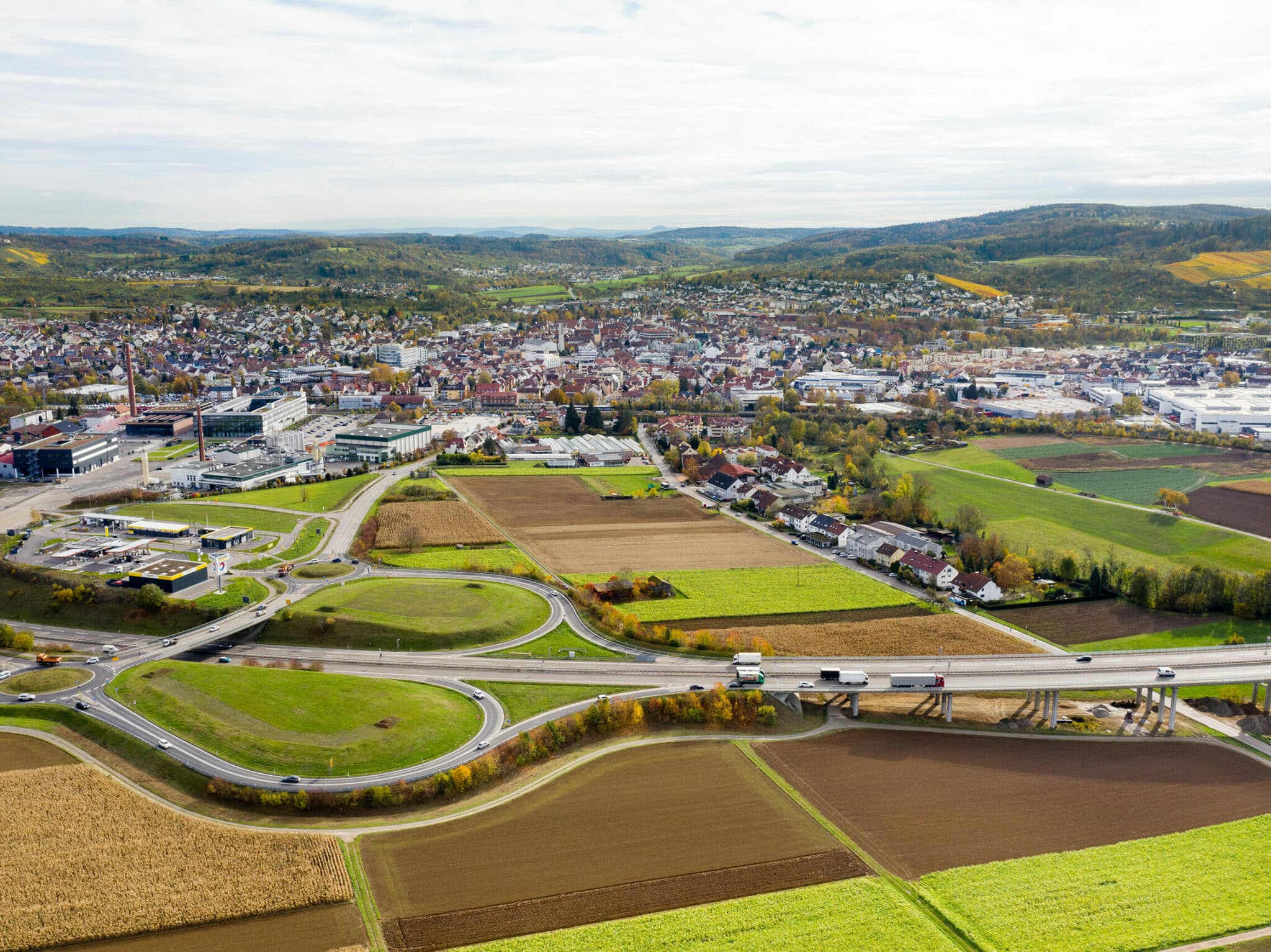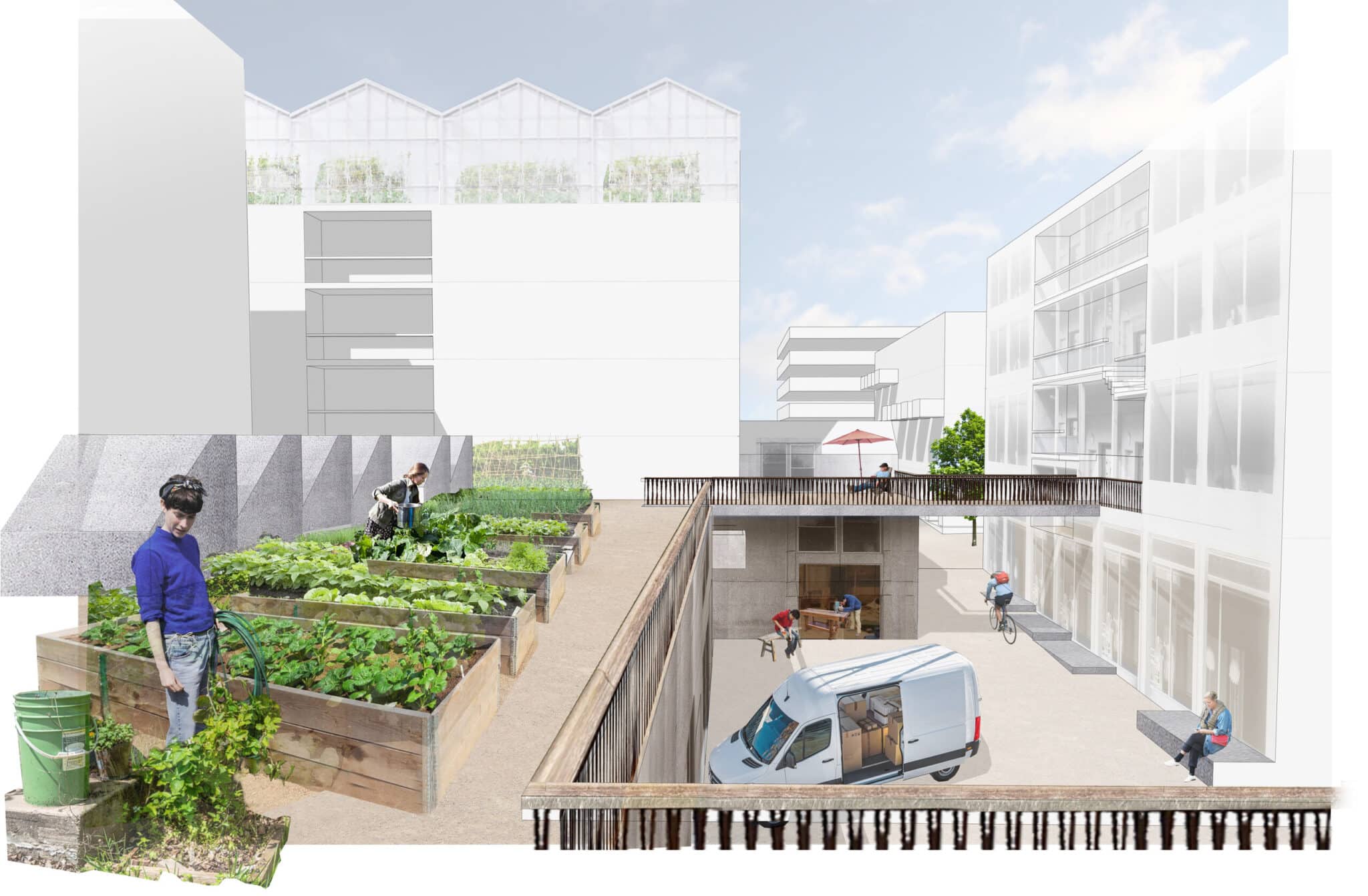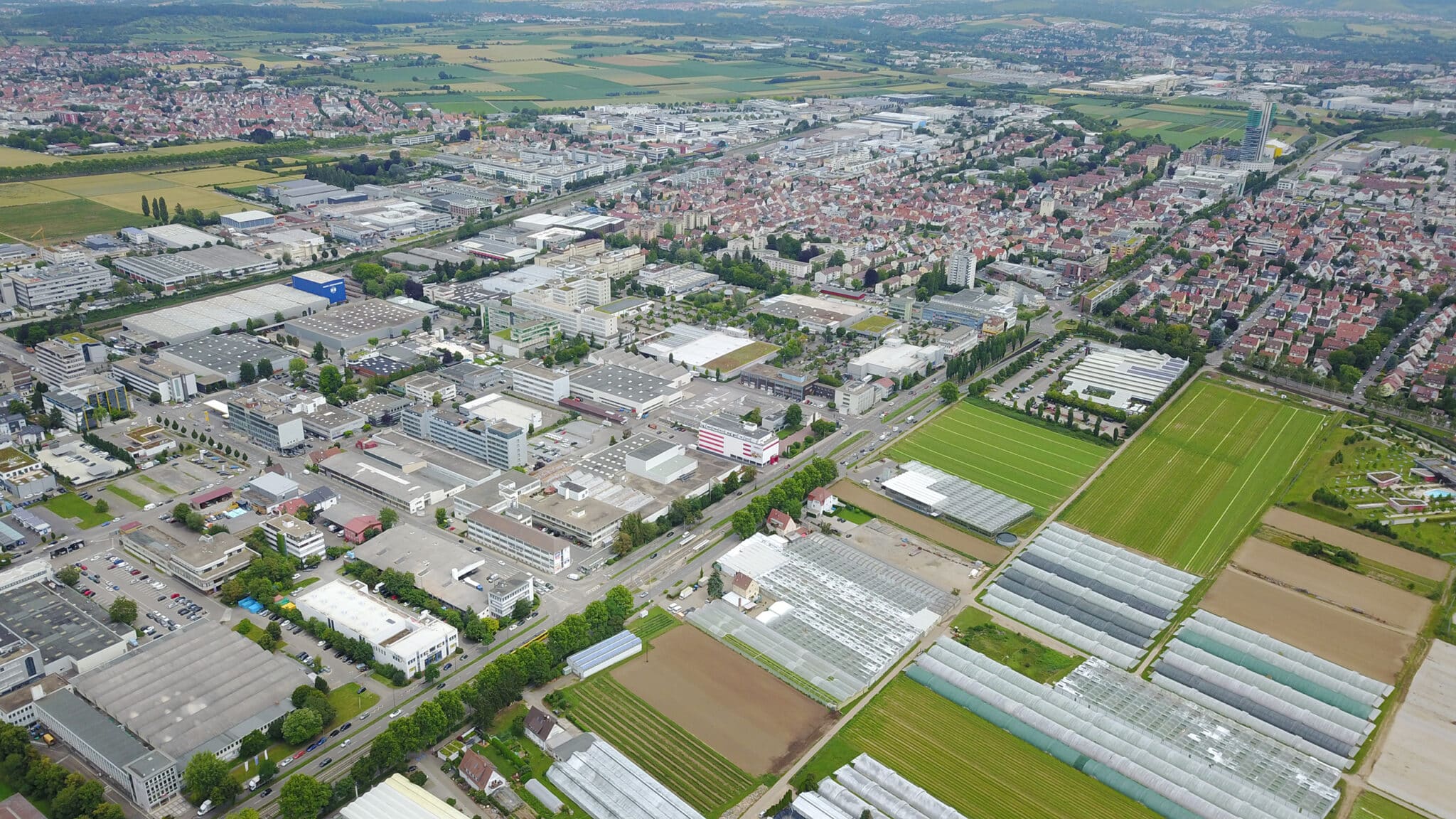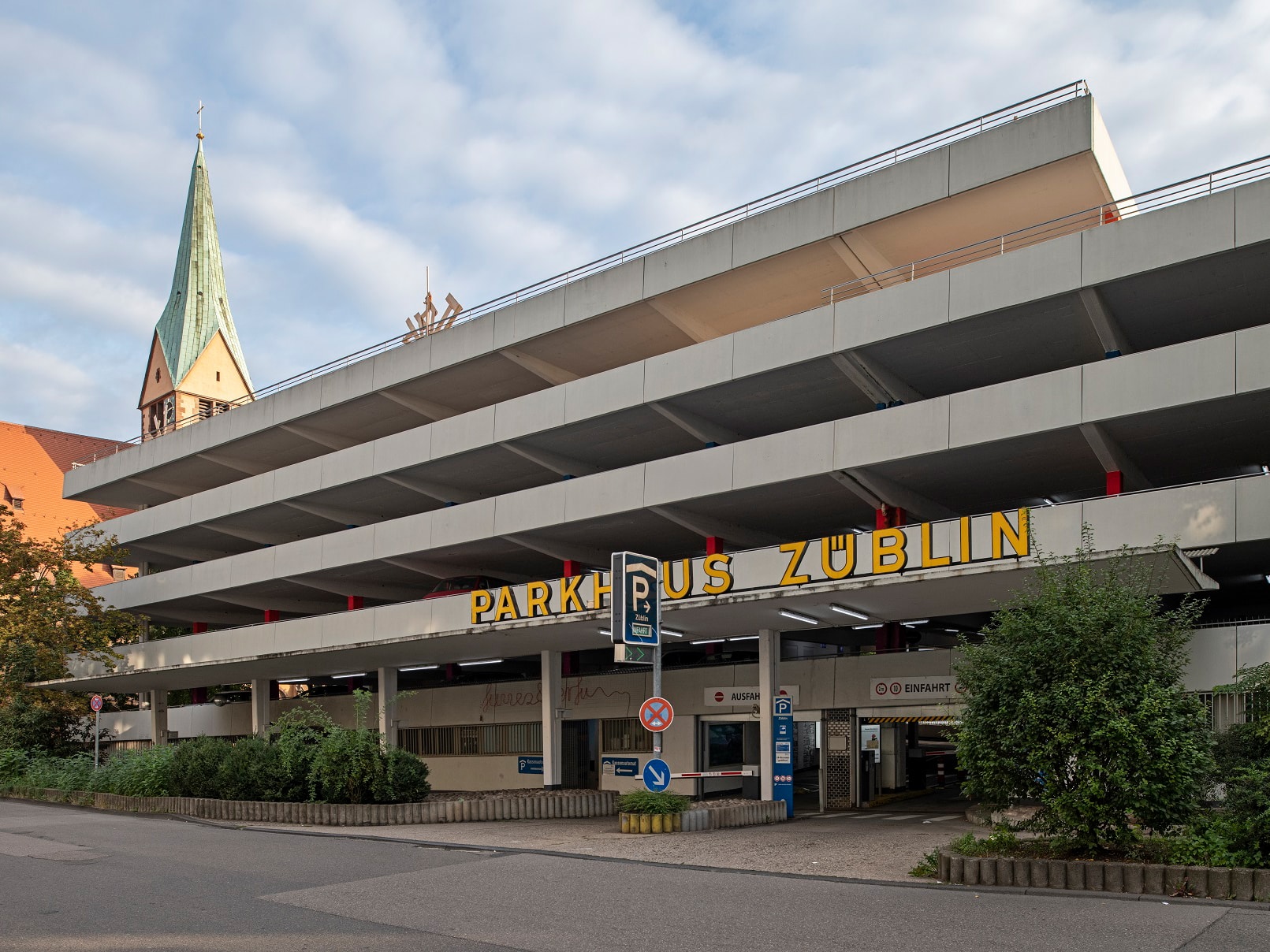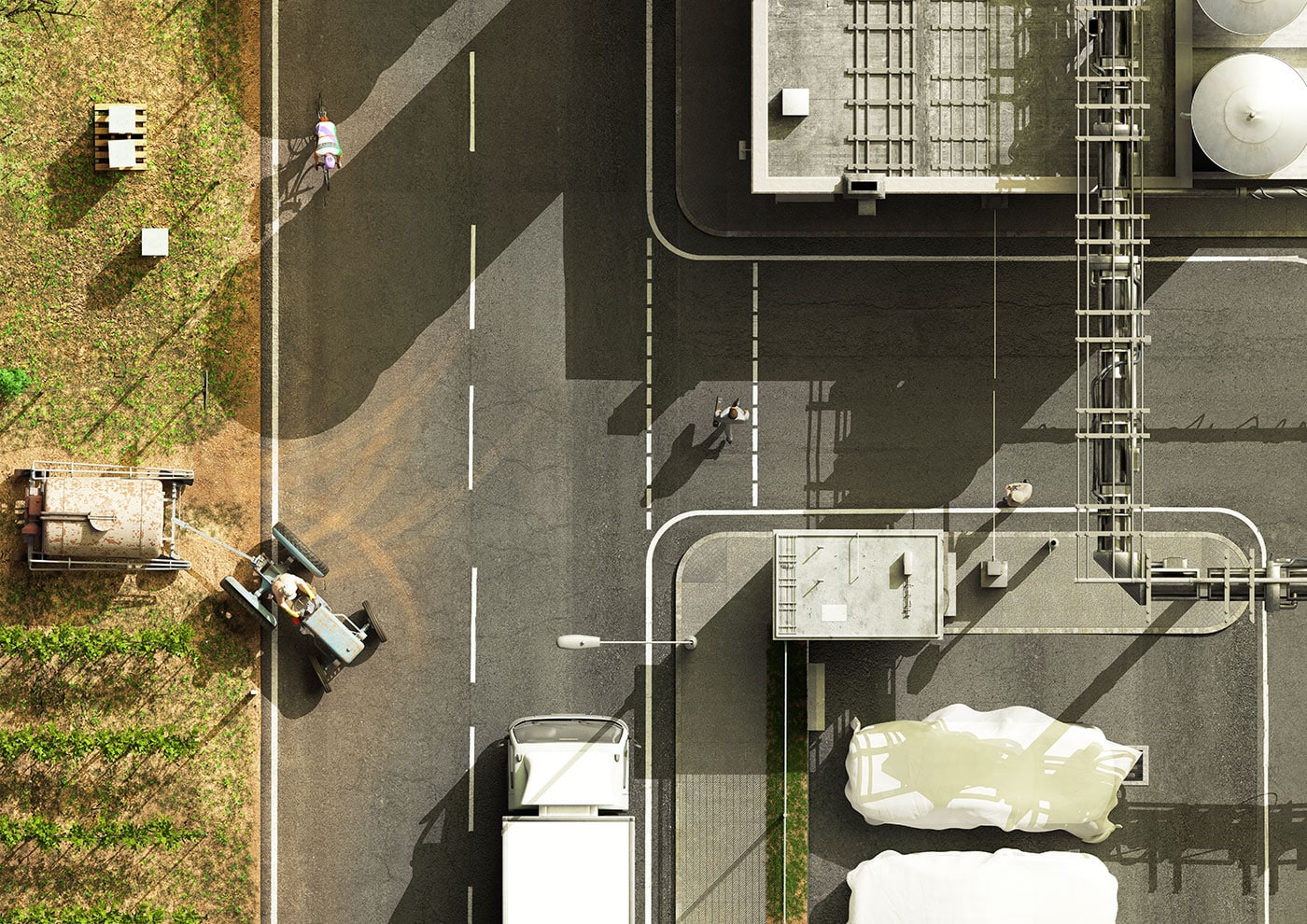Press Release
IBA’27 has found its programme: focus on the »productive city region«
The topics have been chosen and the projects are well under way: The International Building Exhibition 2027 StadtRegion Stuttgart takes stock of the preparatory phase
The International Building Exhibition 2027 StadtRegion Stuttgart (IBA’27) is growing and continuing to take shape. The IBA has received more than 130 project proposals. It has included around 80 of these in the IBA’27 Network and has named the first 14 as IBA’27 Projects. Together with the project initiators, the IBA team is developing new concepts, experimenting with new forms of public consultation and organising international urban planning competitions. Some of these have already been decided, and they provide a first impression of what could be created by 2027. There is a clear focus on the idea of the »productive city region«, which marries housing and leisure time with work and brings together industrial and agricultural production in liveable and sustainable spaces. »The IBA has found its programme.« That’s how Artistic Director Andreas Hofer summed up the progress to date. The IBA is also developing as an organization: The new Lord Mayor of Stuttgart, Dr. Frank Nopper, will be joining IBA’27 GmbH as the new Chair of its supervisory board. In addition, it is launching new partnerships with institutions, business and research. Furthermore, there are two new members on the board of trustees, namely Dr. Mariana Popescu and Prof. Mike Schlaich.
Stuttgart Lord Mayor Dr. Nopper new Chair of the supervisory board
At a press briefing on Tuesday, IBA’27 spoke about the current status of preparations and provided an overview of what comes next. Dr. Frank Nopper took the opportunity to introduce himself as the new Chair of the supervisory board of IBA’27 GmbH. Dr. Nopper was elected as the successor to Fritz Kuhn as Stuttgart’s Lord Mayor in November. The position of Chair of the supervisory board alternates every two years between the City of Stuttgart and the Stuttgart Region. In his introduction, Dr. Frank Nopper said: »IBA’27 fits perfectly with Stuttgart and the Stuttgart Region: The 1927 Werkbund exhibition gave us the Le Corbusier buildings, which are part of our only UNESCO World Heritage Site to date. The spirit of this exhibition still lives on here. We are one of Germany’s and indeed Europe’s most remarkable architect cities. The Stuttgart Region with its strong industrial and automotive focus is one of very few regions to offer an outstanding opportunity to imagine the coming together of mobility and sustainability, economy and ecology and even the transformation of the economy and climate change. Last but not least, Stuttgart and our region are virtually unique worldwide for their reputation as a place synonymous with the spirit of tinkering, inventing and engineering that produces innovations which spread throughout the globe.«
Thomas S. Bopp calls for further support
The City of Stuttgart together with Verband Region Stuttgart and Wirtschaftsförderung Region Stuttgart are the main sponsors of IBA’27. Others include Baden-Württemberg Chamber of Architects and the University of Stuttgart. The State Ministry of Baden-Württemberg for Economic Affairs, Labour and Housing Construction provides funding of around EUR 250,000 per year to the IBA. Thomas S. Bopp, Chair of Verband Region Stuttgart and Deputy Chair of the IBA supervisory board, highlighted the good working relationship and called for further support: »A project as innovative and ground-breaking as the International Building Exhibition has to be carried on many shoulders. IBA’27 is the ideal platform for trying out new concepts for affordable and space-saving housing, for sustainable industrial and commercial spaces, for the future of city centres and the practice of climate-neutral and resource-saving construction. Some municipalities and other project initiators in the Stuttgart Region are going above and beyond the call of duty. Not only the region but the entire state will benefit from their courage and the work this entails.« This is why Bopp wants to see the State of Baden-Württemberg become a shareholder in IBA’27 GmbH. There is now an opportunity to agree on this during the coalition negotiations, he said.
Lang: The IBA is launching new collaborations
Karin Lang, Chief Financial Officer of IBA’27 GmbH, reported on the organisation and the economic situation. »Three years after its foundation and two years after our call for projects, it is clear that the IBA is already developing huge impetus in the Stuttgart Region. As a publicly owned company with a highly motivated team that has grown to 21 specialists, this is quite a challenge for us.« Lang explained that the GmbH’s basic funding from its shareholders and the financial assistance from the State of Baden-Württemberg provide a strong foundation, for which the IBA is very grateful. However, she said, this funding now needs to be increased. This would require additional involvement at all levels as well as support from the business community. »Consequently, we have also started to look for innovative companies that want to contribute to the IBA. Initial feedback from the companies shows a willingness to contribute funding as well as a great deal of interest in becoming part of the IBA process, in networking and professional exchange«, Lang reported.
In the coming months, IBA’27 therefore intends to further enhance technology transfer and its close links with industry and science. This relates to new construction technologies on the one hand and the requirements of companies as users of future buildings on the other. What will the factories of the future look like? What spaces does Digital Industry 4.0 need, and how can they be combined with housing and other uses in urban spaces? »These are important questions for the ‘productive city’, and we can only answer them in cooperation with the business community«, explained Karin Lang.
Hofer: IBA’27 has found its programme
»With the ›productive city region‹, IBA’27 has found its programme.« This is how IBA’27 Artistic Director Andreas Hofer described the ongoing project work in his report. A hot topic for experts in the field, this concept refers to high-density, liveable and mixed-use neighbourhoods where people live, work and spend their leisure time and where low-emissions industry and urban agriculture also find their place. The productive city also encompasses topics such as the future of city centres and a more diverse use of railway stations and their surroundings as places for meeting: »What will make city centres attractive in the future? Where will we meet as an urban community, and how can areas be used differently and better?« asked Hofer.
At present, the Neckar is primarily a ›productive place‹, Hofer explained. It is important to create access and improve the ecology and quality of life there, he said. »This is perhaps one of the toughest tasks we have set ourselves.« According to Hofer, IBA’27 is also dedicated to the legacy of Modernism: »Modernism has strong roots in Stuttgart with the Weissenhof Estate, which celebrates its centenary in 2027. It will be an important visitor attraction in our presentation year. With the intensive mix of uses in the productive city, we also overcome the separation of functions as a planning principle of post-war Modernism in particular. And in projects such as the Sindelfingen Hospital Area, we are also dealing with large building complexes from that era.« Not only does maintaining and repurposing buildings like these wherever possible speak to building culture, it also saves building materials and the energy they contain, he said. »Together with recycling of building materials, preserving this ‘grey energy’ is probably one of the most important parameters for building in a more climate-friendly manner going forward.«
IBA’27 Network is growing – IBA’27 Projects well under way
The productive city and urban production, the future of city centres, train stations as ›places for moving and meeting‹, tackling the legacy of Modernism and the Neckar as a liveable space: these are the topics that IBA’27 has distilled from the project work carried out over the past two years. »I believe that we can use these topics from the Stuttgart Region to tell an authentic and internationally relevant story in 2027 about the future of urban regions«, said Hofer emphatically.
This story is already emerging more and more in projects, he said. »In Winnenden, for example, we recently held a competition won by a truly pioneering design that mixes production, leisure, commerce and housing in a whole new way in high-density building blocks embedded in a green landscape«. IBA’27 is expecting a similarly ground-breaking outcome from the Backnang-West project, with the competition to be decided at the end of April. In Fellbach, the town wants to reorganise its largest industrial zone together with an adjacent agricultural area. »In this project, we are at the beginning of a process that could lead to the exemplary transformation of purely industrial areas with their single-story ‘metal boxes’ into dense, liveable and productive urban spaces.« Whole new types of buildings could be created in the case of multi-functional urban building blocks such as those being considered for the Post Office Site in Böblingen and the Züblin Area in Stuttgart, for example. Hofer explained that these two projects are also examples of new participation processes that marry digital formats with physical formats and involve new sections of the population that were mostly out of reach before now.
Projects entered before the end of 2021 can become IBA’27 Projects
The Artistic Director also gave an overview of the project collection as a whole. More than 130 projects have been proposed for the IBA since the call for projects in 2018, of which around 80 have been included in the IBA’27 Network. Last year, the IBA named the first 14 official IBA’27 Projects from this broad network. These are particularly ambitious construction projects with major potential for further development by 2027. Other official IBA projects are to be announced in the course of this year.
Andreas Hofer estimates that there could possibly be around 25 to 30 IBA’27 Projects in total. Some already have clear potential to become an IBA’27 Neighbourhood, he said. These are large-scale and complex urban development projects that are to serve as anchor points for the exhibition in 2027. And the collection is still growing, with entries for the IBA’27 Network still expected to be possible until close to the end of the term of IBA’27. And proposals submitted by the end of 2021 can still become an IBA’27 Project. »We are still accepting entries«, Hofer stressed. »The IBA Network is still open. But based on time alone, complex construction projects submitted any later will probably no longer be ready for exhibition as an IBA’27 Project by the year 2027.«
Board of trustees expanded
In order for a proposal to be named as an IBA’27 Project, a resolution must be passed by the supervisory board on the recommendation of the board of trustees. The IBA also had news to report in this respect: Two new members, Dr. Mariana Popescu and Prof. Dr. Mike Schlaich, have been added to this international advisory body. Born in Romania, Mariana Popescu studied architecture in Delft and completed her doctorate in 2019 at the renowned Block Research Group at the Institute of Technology in Architecture at ETH Zurich. She is an expert on new manufacturing methods for building materials. Mike Schlaich, born in Cleveland, Ohio, also obtained his doctoral degree at ETH Zurich. He is a Partner and Managing Director at Schlaich Bergermann Partner and a Professor at TU Berlin (Chair of Conceptual and Structural Design).
